QuestionQUESTION: Hi, i bought my two leos three days ago at petsmart. One of them looks smaller than an ordinary hatchling and the other looks about the same size as a hatchling. I dont know how old they are but their tails are very skinny. Once in a while i see them licking their butt because it looks like a rash. The temperature in the day is about 88 and i leave out mealworms for them. So far they've only ate one. When they look at crickets, they dont chase them. What should i do? How can i get them to eat?
ANSWER: Hi Chris,
I'm going to include a basic care sheet that I wrote to help people out. What I recommend is to make any needed changes in care and if they don't start eating in a day or so, then I would either return them to PETSMART and get larger leos or get them to a vet to find out what is going on.
The licking the butt concerns me as that it can be a sign of internal parasites or a blockage. Both need a vet, either your own or take them back to PetSmart. Mealworms are not recommended at all for hatchling leos. There is too much hard outer body on the mealworms and it does not digest and can cause blockages. Properly sized crickets are what is suggested. If they don't want to chase the crickets, you can break the hind legs on the crickets, which will prevent them from jumping. Also, offer water from an eye dropper one drop at a time to the leos.
Have the leos had their first sheds yet(most likely at Petsmart)? Leos won't eat until their first shed, but, I would assume they have had that already.
Your tank also needs to have 3 temperature areas.... a cool area, a medium area and a warm(basking) area. In the basking area its best to have both undertank and overhead heat to get the proper environment for the leos. Since leos are ground dwellers, floor temperature is very important. Undertank heaters work well for this. You want it to cover about 1/3 of the tank floor. That area (floor and to an extent, air) need to be a gradient temperature of 88-92 degrees. They need to have access to this 24 hours a day. More on set up in the care sheet.
Also, they need to have a cave in this area as they will spend most of their day in it as they are nocturnal. At night, any bright white lights do need to be turned off andeither heat emitters or nocturnal bulbs need to be used if needed. Be sure to offer their insects in the early evening. Again, if after making any adjustments in care they still do not eat I would return them or get them to a vet, especially since there is a rash and the licking.
BASIC CARE FOR A LEOPARD GECKO
Leopards are pretty easy to care for but they do need
special care. Here are some of the basic needs of your gecko.
HOUSING: The need to have at least a 20 gallon long tank for one Leo. This needs to have a secure fitting screen top...they can be quite the escape artists!!! They need to have a humid hide box.You can make this with something as simple as a small plastic dish with a hole cut in one side and a small mesh bag filled with some Sphagnum moss coconut bark or Peat moss that you mist.
I made mine out of the small plastic folgers coffee containers...I cut an opening in the lid..and put the moss in..they LOVE it. I use the terrarium moss in mine.
I use that on the warm side of the tank. Be sure to provide a cool hidebox on the other end. I also provide a mid temperature hide...which is in the middle of the tank.I use the critter caves which you can purchase. NOT the ones that have heat in them!!!!
Provide secure climbing areas for your gecko. Fake plants, rocks and branches are all fine to use. be sure there are no wires or sharp ends to any fake plants you use.
*****SUBSTRATE:(that's the stuff on the floor of your tank) Newspaper, lizard carpet or paper towels work great and are easy to clean and are much safer than any loose substrate. Sand or other loose substrate is not recommended as that they can be deadly to the leo when it is ingested(eaten, even by accident while eating their insects)...A very graphic site of an impacted leo surg can be seen at http://homepage.mac.com/exoticdvm/reptile/PhotoAlbum181.html it is very graphic!!! ******What I have found that works great for safety and heat distribution is using about 1/4 inch of childrens play sand(since the tiles fit tight together, there is no sand danger) on the bottom of the tank and on top that you place ceramic or slate floor tile. What is nice is that the 12 x 12 squares fit perfect in a 20 gallon tank with no spaces between the tiles. The sand and the tile distribute the heat wonderfully. Using the under tank heater as described is what distributes the heat. Also, overhead heat will help in heating the tiles...I've been using this set up for several years and the leos love it. Using a tile that isn't smooth is recommended. **********
TEMPERATURES: They need a warm area ( on the floor) of 88-92 degrees and a
cooler area in the upper 70s, low 80s. At night their temperature can drop to the low to mid 70's.
Never use a hot rock for a leopard gecko...or any reptile.
They can severely burn any reptile. You can use a heating
pad under the tank,under tank heater for the warm area. You can use a regular household lightbulb in a dome fixture with a ceramic socket in it to keep the warm area at the 88-92 degree area if needed there, otherwise, placing the lightbulb about midway in the tank will give the needed temeratures throughout the tank. You may have to play with the wattage of the bulb but generally 40-60 watts is sufficient.At night, no white light. If room temperatures stay above 70 degrees, no extra night heat is needed. The undertank heater or heating pad should cover about 1/3 of the tank....be sure to raise the tank up about 1/4-1/2 inch off the stand when using an undertank heat source to prevent heat build up which can cause the glass to break and hot spots in the glass. Be sure to have a good layer of newspaper, carpeting or, even a thin flat rock(such as tile) on top the area that the undertank heat source is placed...if you use a thin rock or tile, it helps to distribute the heat very well.
You can use the special nighttime lights that are designed for reptiles. I like using a ceramic heat emitter on a thermostat for nighttime heat.
DO NOT use black lights or party lights as they can cause eye damage!!!!
The wattage you use will vary based on room temperature and size of tank.
LIGHTING: Leopard geckos do not need UVB lighting but it does not hurt them to give them uvb. They should have some type of light during the day, be it a uvb tube, regular florescent light, reptile day light or regular household lightbulb. NO white lights at night!!!
FEEDING: Geckos should not be fed crickets or other insects that are bigger than the space between their eyes. Generally, hatchlings can be fed more than once a day,juvys can be fed twice a day, adults are fed once daily or every other day, in the early evening. Crickets and other food items such as silk worms, super, and an occasional treat of a wax worm, need to be dusted with a calcium supplement two times a week and also they should have a small dish of calcium in their tank. I use the lid of a milk jug for the little dish of calcium in their tank. For dusting the insects, Use a calcium with no added phosphorus. Insects must be gut loaded(fed) for at least 48 hours prior to feeding your gecko. Remove any uneaten crix or superworms after 15-20 minutes..... Place a piece of cut potato in the tank so that if you have missed any uneaten insects, they will eat the potato instead of nibbling on your gecko!!!
*************You have to be sure to feed your crickets and insects the right foods before feeding them to your gecko. If your crickets/insects are not healthy and well fed, your gecko will not get the nutrition he needs. You can gut load your crickets and insects greens, veggies, cereals or specially designed commercial foods for crickets or the insects you are feeding. ************
Be sure to have a small dish of clean water for your gecko at all times!!
You can offer them some baby food or fruits on occasion ...
Mine will even eat a small piece of watermelon now and then.WATER: always provide a dish of drinking water. If you choose to mist your gecko to drink, its best to not get the tank too wet as that they do not do well with higher humidity. Sometimes its better to take your leo out of their tank to mist them to get them to drink!!!
HANDLING: Some geckos enjoy being held...others prefer not to be handled at all. Be sure to be very gentle when holding your leo and NEVER grab them by the tail! Their tails are extremely fragile and will break.
I do suggest finding a vet that can treat reptiles BEFORE you actually need one!!! To find a vet that is able to care for reptiles:
http://www.herpvetconnection.com
http://www.arav.org/ECOMARAV/timssnet/amm/tnt_mdsearch.cfm
http://www.anapsid.org/vets/
For more information on leopard geckos:
http://www.drgecko.com
If you have any questions or don't understand something, please let me know.
---------- FOLLOW-UP ----------
QUESTION: Thank you so much for the advice! I took the two leos back and got two different ones. These guys are still about A month old but look healthier. I got them two days ago and i just wanted to know when would it be okay to hold them and for how long. How do i get them to get used to me?
AnswerHi Chris,
I'm glad you have two healthy looking leos now that ate older.. For about a week, until they settle in,(depending on how they act) just do what is needed with them..spot cleaning the cage, feeding them, changing water, checking temperatures, adding water to the humid hide) don't try to pick them up. All those movements in their tank should help get them used to your hands. When they seem to have gotten ok with their new home, then you can just hold your hand in their when they are up and about and let them climb on your hand, smell you, etc. Once they are ok with that,(usually a few days) then you can start to just get them used to picking them up for a few seconds as they climb on your hand. Then let them climb back off..your hand will just be like a rock they are climbing over. Once you start picking them up, be sure to not keep them out for more than a few minutes, especially at room temperatures because they will cool off very quickly.
One thing I want to mention... if you happen to have two males, they will need to be seperated sooner than later as they will fight till death. Hopefully you have two females, which generally there won't be an issue, but do be prepared because even two females may decide they don't like each other.

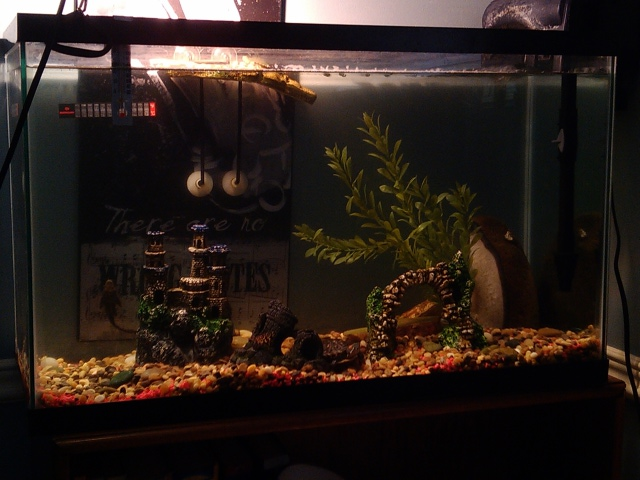 Red Eared Slider
QuestionQUESTION: I have had a red eared slider for abo
Red Eared Slider
QuestionQUESTION: I have had a red eared slider for abo
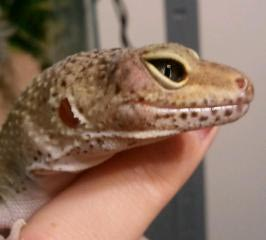 (Leopard Gecko) Lumps behind eyes and jaw.
Question
Tango
My male leopard gecko, Tango, has
(Leopard Gecko) Lumps behind eyes and jaw.
Question
Tango
My male leopard gecko, Tango, has
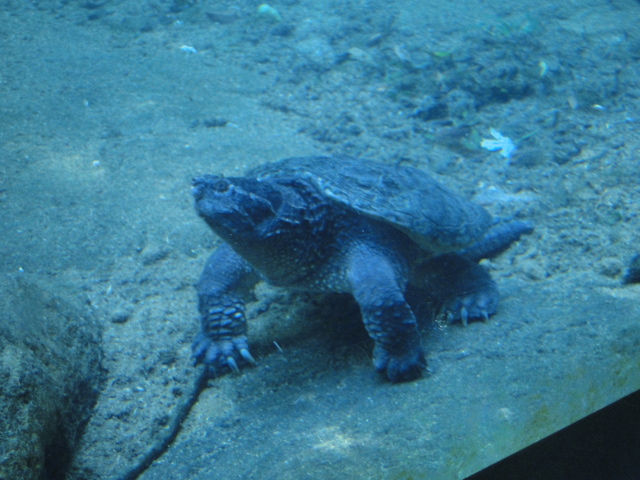 Identification
Question
Could this be an allig Is this a type of
Identification
Question
Could this be an allig Is this a type of
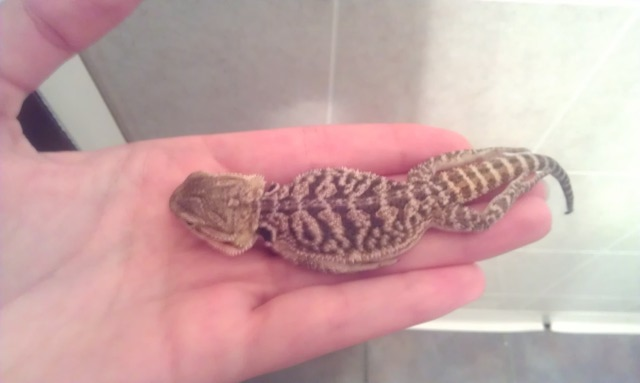 Sick Baby Beardie?
Question
Baby
I just purchased a baby Bearded Dr
Sick Baby Beardie?
Question
Baby
I just purchased a baby Bearded Dr
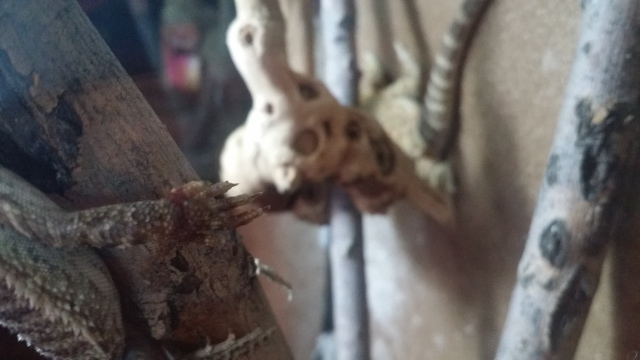 Need Help!!!!!
QuestionQUESTION: hey tracie I noticed that you are on
Need Help!!!!!
QuestionQUESTION: hey tracie I noticed that you are on